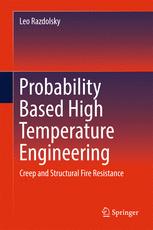

Most ebook files are in PDF format, so you can easily read them using various software such as Foxit Reader or directly on the Google Chrome browser.
Some ebook files are released by publishers in other formats such as .awz, .mobi, .epub, .fb2, etc. You may need to install specific software to read these formats on mobile/PC, such as Calibre.
Please read the tutorial at this link: https://ebookbell.com/faq
We offer FREE conversion to the popular formats you request; however, this may take some time. Therefore, right after payment, please email us, and we will try to provide the service as quickly as possible.
For some exceptional file formats or broken links (if any), please refrain from opening any disputes. Instead, email us first, and we will try to assist within a maximum of 6 hours.
EbookBell Team

4.8
74 reviewsThis volume on structural fire resistance is for aerospace, structural, and fire prevention engineers; architects, and educators. It bridges the gap between prescriptive- and performance-based methods and simplifies very complex and comprehensive computer analyses to the point that the structural fire resistance and high temperature creep deformations will have a simple, approximate analytical expression that can be used in structural analysis and design. The book emphasizes methods of the theory of engineering creep (stress-strain diagrams) and mathematical operations quite distinct from those of solid mechanics absent high-temperature creep deformations, in particular the classical theory of elasticity and structural engineering. Dr. Razdolsky’s previous books focused on methods of computing the ultimate structural design load to the different fire scenarios. The current work is devoted to the computing of the estimated ultimate resistance of the structure taking into account the effect of high temperature creep deformations. An essential resource for aerospace structural engineers who wish to improve their understanding of structure exposed to flare up temperatures and severe fires, the book also serves as a textbook for introductory courses in fire safety in civil or structural engineering programs, vital reading for the PhD students in aerospace fire protection and structural engineering, and a case study of a number of high-profile fires (the World Trade Center, Broadgate Phase 8, One Meridian Plaza; Mandarin Towers). Probability Based High Temperature Engineering: Creep and Structural Fire Resistance successfully bridges the information gap between aerospace, structural, and engineers; building inspectors, architects, and code officials.